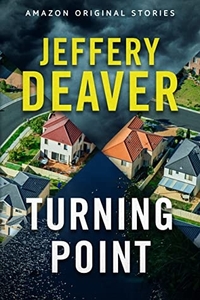Milk Fed by Melissa Broder
 Monday, February 1, 2021 at 7:12AM
Monday, February 1, 2021 at 7:12AM 
Published by Scribner on February 2, 2021
Milk Fed begins as a light novel about a woman struggling with an eating disorder. It becomes heavier and darker as it transforms into an exploration of sexual and religious identity. Add the eating issue and the novel is about self-acceptance in the face of societal or parental judgment.
Rachel works for a talent agency. She also performs one evening a week at a comedy club. In her dreams she receives wisdom from a rabbi. In her waking hours she sees a therapist to address her mother issues.
To her mother’s displeasure, Rachel indulged her sweet tooth as a young girl and got chubby. At sixteen, she compensated by eating too little and nearly becoming anorexic. Eventually she saw a nutritionist who balanced her so that she ate the right amount of healthy food. Now she counts calories obsessively. She also thinks about food (particularly sweets) obsessively. And she frets about her mother obsessively. Her therapist wants her to detox from her relationship with her mother because it is “emotionally unsafe.” That’s easier said than done.
Also to her mother’s displeasure, Rachel is either bisexual or a lesbian. She’s never had a sexual relationship with either gender that was completely satisfying. Early in the novel, Rachel develops a friendship with Miriam, who works in a yogurt shop. She’s not sure whether Miriam shares her interest in a physical relationship, but she allows Miriam to feed her decadent yogurt sundaes and high-calorie Chinese food. Rachel also consumes Shabbat meals at the home of Miriam’s parents. She thus experiences the pleasure of flavor but the frustration of weight gain, mixed with the pleasure of friendship and the fear of trying to move that friendship to a more intimate level.
Miriam is not by nature averse to having sex with a woman, but she resists her desire because her Orthodox parents will be less than pleased at her choice of partners. The relationship does eventually change. The later chapters are rather graphic in their description of that change, which I report not so much as a warning as an endorsement for readers who might enjoy graphic titillation. But Rachel eventually gets it on with a male client in violation of her employment agreement. That scene also leaves little to the imagination.
Sexual uncertainty might be a lesser conflict in the Rachel/Miriam relationship than religion. Rachel enjoys the time she spends with Miriam’s family, which seems more accepting of her than her own mother, but she also feels the need to avoid their judgment. She does not share their uncritical embrace of Israel and the occupation. When Rachel politely suggests that Palestinians might have legitimate grievances, Rachel’s mother reacts with knee-jerk hostility, accusing Rachel of self-hatred and betrayal. Rachel wonders what it means “to love a version of something that might not really exist — not as you saw it. Does this negate the love?” While she asks that question about Israel, it might also be asked about Rachel’s love of Miriam, a love that must be kept secret to avoid the judgment of Miriam’s mother.
Despite the novel’s exploration of self-image, sexuality, intolerance, and parental judgment, the story doesn’t bear an oppressive weight. This is journey of discovery. Rachel learns about herself by tasting the forbidden flavors of chocolate and sex. She lets down her barriers and becomes less uptight, less fearful of her desires. She doesn’t know if this new feeling is “surrender, freedom, or a total delusion that was ultimately going to hurt me.” It is certainly not without consequences, but experiencing consequences is a necessary condition of growth. The period of Rachel’s life that we see in Milk Fed is one of difficult change, but the Rachel who emerges is more confident and less fearful of the choices she will need to confront in the future.
RECOMMENDED



